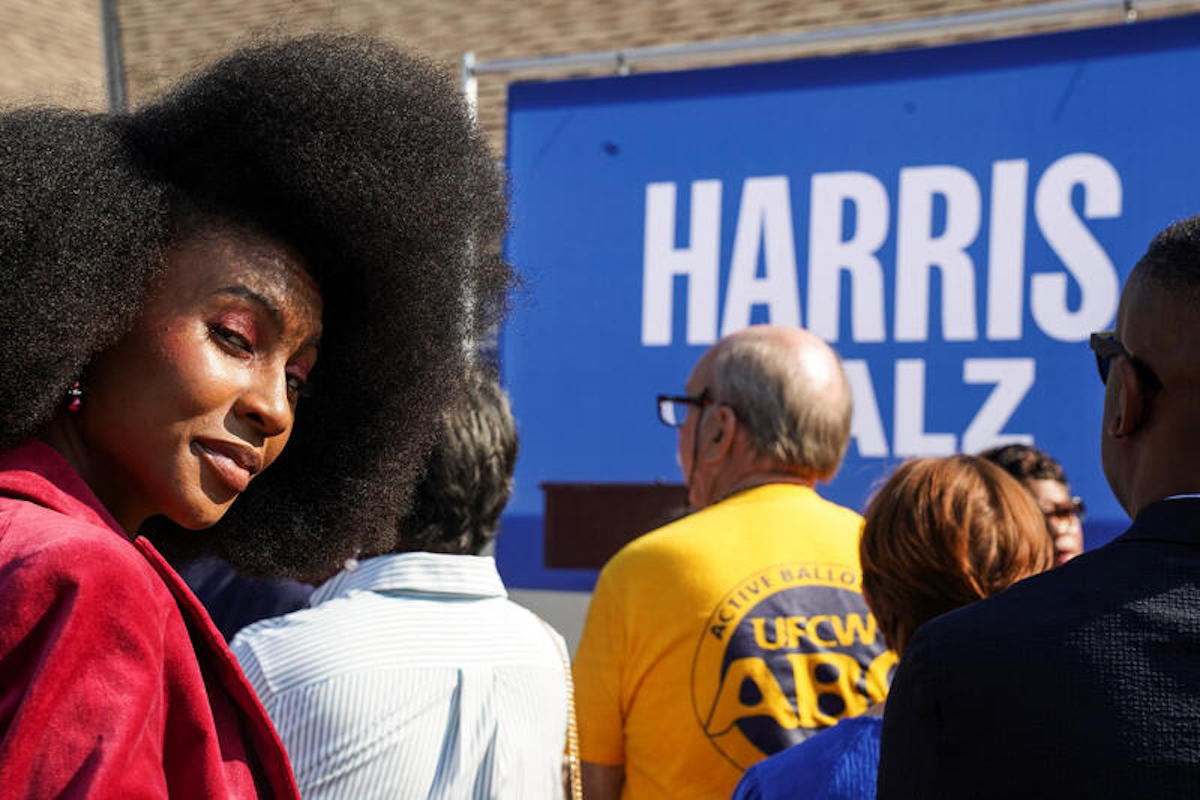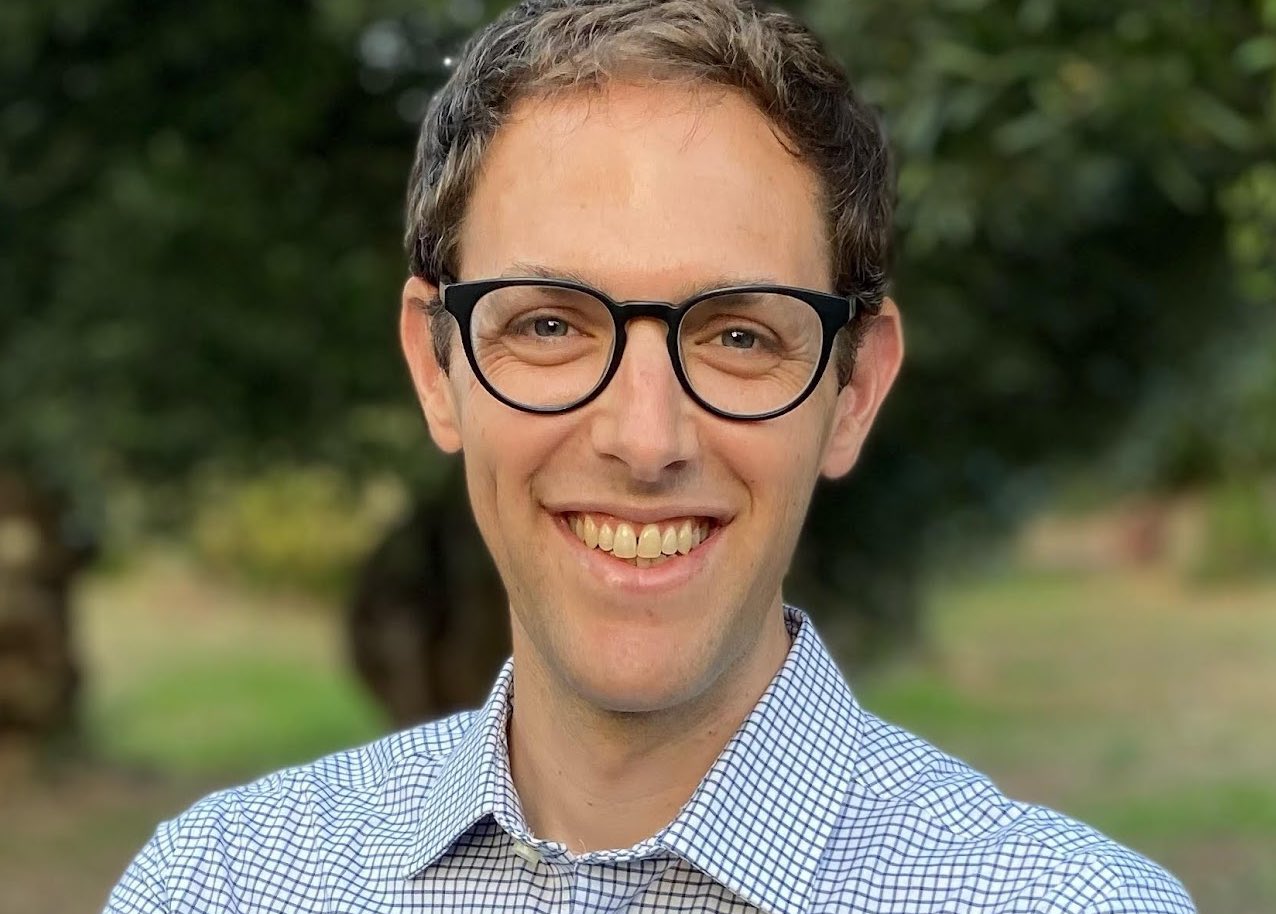Why millions of Americans avoid the news – and what it means for the US election

A person looks on during a rally with Bill Clinton in Columbus, Georgia. REUTERS/Megan Varner
Benjamin Toff is one of the leading experts on the rise of news avoidance and one of the authors of this recent book on this issue, based on survey data and interviews with people in Spain, the United Kingdom and the United States. He was also the leader of our own Trust in News Project and is now an Assistant Professor at the University of Minnesota.
As election day approaches in the US, I spoke to Ben about why news avoidance may be shaping this year’s election, how candidates are trying to reach these elusive audiences, and what news organisations are doing to reach those who don’t follow the news in its current form. Our conversation has been edited for clarity and length.
Q. How many people avoid the news in the United States?
A. According to this year’s Digital News Report, up to 43% say they avoid the news in some form. It doesn’t mean that 43% of the country is not consuming any news at all. But it’s a sign of a clear decline in interest in news. There is a smaller group of people that we call consistent news avoiders. They consume news less often than once a month or never, and this group is around 8% of the US public, which is still millions of people.
Q. Who are these news avoiders in the US?
A. A lot of things are similar across countries. These people are more likely to be younger and working-class and less likely to be college-educated. They are also slightly more likely to be women than men. Lack of interest in politics is a huge predictor, so people who are consuming little to no news (or avoiding news often) are less interested in politics and less likely to participate in political life.
But here’s one of the things that’s different about the US. In addition to those patterns, you also have a larger segment of people who are on the right ideologically and who are also avoiding news, and part of what they are expressing is dissatisfaction with conventional sources of journalism.
Q. What are the reasons they give for avoiding the news?
A. It’s a mix of things. There’s a set of people who emphasise that it’s not about the news at all, but about the structural barriers in their lives. They just feel like they don’t have time to focus on the news because they are taking care of three kids and an ageing parent and working full time, and it feels too exhausting to make time for the news at the end of the day.
But there’s another segment of people who emphasise that it’s about the news itself, and here it’s a mix of things ranging from an emphasis on how anxiety-inducing the news itself can be to frustrations with sensationalism and the sense that what is being covered in the news just feels irrelevant to the things they care about. Some conservative audiences point to this feeling of news being untrustworthy: they just don’t trust that journalists are impartial.
Q. What’s the relation between news avoidance and political engagement?
A. The more college-educated you are, the more politically engaged you are and the more likely you are to know exactly where you stand between Donald Trump and Kamala Harris. So, in that sense, your vote is much less up for grabs. So the reason there’s this much focus on the rest of the public is that this less engaged segment is perhaps more susceptible to be persuaded. And part of it is not just being persuaded to vote one way or the other, but to vote at all.
Among these news avoiders, there are much lower rates of political participation altogether. That is part of the reason why the campaigns are as focused as they are on reaching those audiences. And they have to do so also through less traditional means because they’re less likely to be consuming legacy outlets.
Q. That’s why we are seeing both candidates do so many interviews with podcasters and news influencers. Does this strategy make sense?
A. It does, particularly when you think about younger audiences, who are more likely to be using platforms like TikTok or Instagram. If you’re a candidate, you have to meet people where they are. I suspect the challenge for Trump is a bit different as outlets like Fox News only give them a limited audience. So they are also trying to find older conservatives who are more marginally engaged.
Neither campaign is probably focused on the most consistent news avoiders, people consuming almost no news whatsoever. That population tends to be much less likely to vote.

Q. Our own data suggests many Americans perceive journalists as a poor watchdog, or even sometimes as enablers of powerful actors. Why?
A. Part of the explanation is found in the forms of news that people are most likely to encounter. If you don’t consume a lot of news, the sources you are more likely to be thinking about are not investigative journalism from the New York Times but clickbait, sensational headlines about celebrities, local news coverage of crime, and opinions on cable news.
These are the forms of news that most people have at the top of their mind, and they don’t see it as particularly relevant to the things they care about. Many think these kinds of journalism are purely produced for commercial profits or to advance a political agenda. And so they tend to associate journalists with serving those aims. These people are also much less likely to have ever talked to a journalist or known one personally. They see journalists as part of the same disconnected elites. They see them just like politicians who are out to serve themselves.
Q. Some news avoiders also think that news organisations misrepresent people like them. How widespread is this feeling and how does it influence audiences’ relationship with news?
A. People’s own social identities really shape their relationship with news, and in lots of different ways. Some of the conservative evangelicals that I interviewed emphasised that the things that matter most to them have to do with their religious beliefs. So they feel the things that they really care about are not being represented or given fair attention in the news.
Similarly, when we interviewed people in rural Iowa, one of the things they said echoed what Black Iowans in Des Moines were also saying: that the news media only paid attention to them in moments of crisis, and that they only saw negative representations of their community. It’s this feeling of news being produced for other people and at the expense of their community, without any real investment in serving those communities themselves.
Q. How has news avoidance changed in the digital age?
A. Some of the patterns we see have probably existed in some form for many decades. But there is something distinct about the digital environment.
One of the things we heard a lot of in our interviews is this feeling from people who say that news finds them when they go on social media and how they don’t feel like they need to develop a regular news habit because it’s just more efficient to be incidentally exposed to the most important information. Similarly, they say the internet is just so vast that all the information is out there, and you could just go to Google for news whenever you are looking for it.
People still feel that way, but the environment has changed. In the last couple of years, digital platforms have reoriented themselves away from delivering much news. So I am not sure how many people still have the same kind of exposure as they did even a few years ago. We are seeing a huge divide between people who are interested in news and those who are not, and I suspect that this divide is intensifying. That is largely a function of the changing digital environment and the way people are accessing news, but also the pathways that people are using to keep up with what's happening.
Q. Our figures suggest trust in news is quite low in the US and has recently gone down also amongst left-leaning Americans. Why?
A. The decline of trust in news in the US goes back to the 1970s, so it’s just a longer-term trend.
In terms of the fluctuation we are seeing in recent years, there was an increase in trust among people on the left during the Trump years, with a lot of Democrats rallying around the news media during those years when investigative journalism was uncovering various Trump scandals. Now that Democrats are in government, people on the left have a different attitude towards the news media and whether they are serving their political aims.
The other part of this is the link between trust in news and people’s habits around news consumption. There’s just a sort of familiarity with the sources of news that they may be using in a regular way. And as younger audiences are less and less likely to develop regular news habits, there is more of this kind of generalised scepticism and distrust towards the entire enterprise of journalism.
Q. What can news organisations do to counter this distrust?
A. It’s tough because so many of these forces are outside of journalists’ control: the political environment, the media ecosystem, and the cultural trends around people's digital media habits. But that doesn't mean there’s nothing journalists can do.
There’s a tendency in journalism to not communicate all the work that goes into news gathering, reporting and confirming information. Journalists often take for granted that audiences know all that work, but increasingly that’s not the case. So there are ways in which that kind of work can be signalled more effectively.
The challenge is that we live in a crowded information environment. So getting people to even pay attention to higher quality, rigorous reporting is perhaps 90% of the challenge. Many news organisations depend heavily on digital platforms to try to expand their reach and that is a double-edged sword: the things that go viral in those spaces may not be the kind of journalism that is most likely to build trust.
Q. Have you seen interesting experiments in this space?
A. Some outlets are trying to look for other ways of connecting directly with these evasive news consumers. We’ve seen experiments involving text messaging or WhatsApp to reach people directly.
But a big part of news consumption is really social, and depends on what we call news communities. These groups are a really important piece of people’s relationship with news. They reinforce the habits around following news and the social benefits people get from paying attention to news. It’s hard to know how to create a news community where one doesn’t already exist, but it might be good to try.
This is probably not going to come from political coverage but from other areas of journalism that people are both more interested in and feel less divided about. I’m thinking of things like sports, culture or food. If you develop habits and a relationship with news audiences around these areas of coverage, the hope is that then they'll feel a sense of familiarity with the organisation and they’ll turn to you for specific information as well.
Q. We see partisan left-leaning people scolding news organisations for so-called sane-washing Trump or for being too inquisitive about Harris. If journalists followed that kind of advice, would it help or damage trust in news?
A. These very politically engaged, partisan audiences see politics through this lens, what academics call the third-person effect: they are concerned about how news is going to influence other people [but not them]. There’s a lot of alarm about what the New York Times is saying and how that might impact larger media framing of the election and how other voters are going to perceive it.
We often exaggerate how much of an impact this actually has. But the anxiety about the election is fuelling that kind of concern. Today we have more voices in the media in general, and this is not just on cable news but also on social media. There’s no lack of places where you can hear media criticism. In some ways, that’s very healthy compared to 40 years ago, when all the news looked fairly similar and was basically decided by a small group of old white guys.
It’s a good thing that we have a much more pluralistic media environment, but it also means that there are many different perspectives on every story in the news. So it’s also easier than ever to find critiques of why coverage is wrong and inaccurate. The sense that it’s harder to know the truth is also fuelling some people’s sense that it’s safer to just not trust any news at all. That is part of the way in which the digital environment is also fuelling some of that generalised scepticism and distrust.
Q. Are there any feasible policy interventions in the US that can counter some of the trends we’ve discussed (news avoidance, decreasing interest, distrust)?
A. When we spoke to some news avoiders who had tried at various points to kind of re-engage with news or to develop a habit that they never had in the first place, they talked about how difficult it is to make sense of what’s going on in these stories. They also say there’s too much jargon in them.
The analogy we use in the book is that it’s like trying to tune into the fourth episode season of Game of Thrones without knowing who these people are, or what difference any of this makes. For a lot of people, that’s their feeling about the news.
These people are not the primary audiences that most news organisations are trying to serve. They tend to be much more focused on the people who are already spending a lot of time with them, and trying to convert them into paying subscribers. They are not even focused on serving these more evasive audiences.
A lot of the news avoiders we interviewed who were not voting would often point to this feeling that they just didn’t think they knew enough to vote. They have the sense of having no agency. News consumption and political engagement are intertwined and they reinforce each other in this kind of spiral. From a public policy standpoint, it’s hard to see what’s going to be most effective at solving that puzzle.
You do see differences by country though. Places that have a lot more investment in public service media have much higher rates of engagement with news and more political engagement. That’s currently a non-starter in the US. But that’s one solution that some say is increasingly necessary, given the market failure around local news.
If you want to know more...
- Read this excerpt of the book Avoiding the News, authored by Benjamin Toff, Ruth Palmer and Rasmus Nielsen.
- Explore our Trust in News Project, which includes many insights about audiences in the United States.
- Read this piece by Nic Newman and Ellen Heinrich with seven tips for journalists to address news avoidance.
- Check out US country page in this year's Digital News Report.
In every email we send you'll find original reporting, evidence-based insights, online seminars and readings curated from 100s of sources - all in 5 minutes.
- Twice a week
- More than 20,000 people receive it
- Unsubscribe any time
signup block
In every email we send you'll find original reporting, evidence-based insights, online seminars and readings curated from 100s of sources - all in 5 minutes.
- Twice a week
- More than 20,000 people receive it
- Unsubscribe any time






